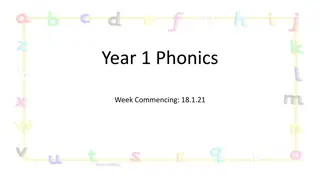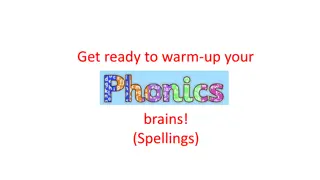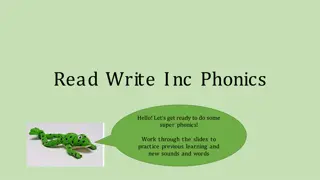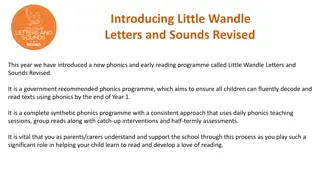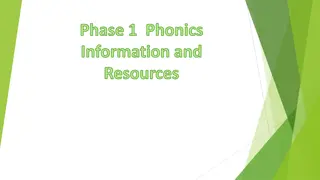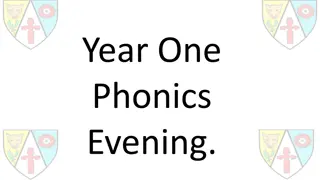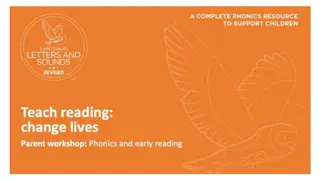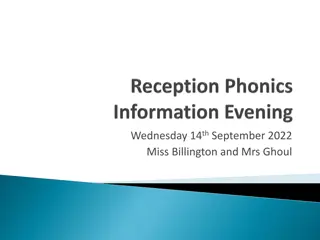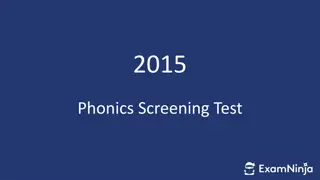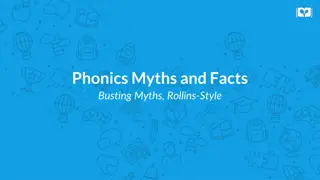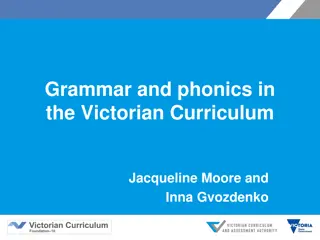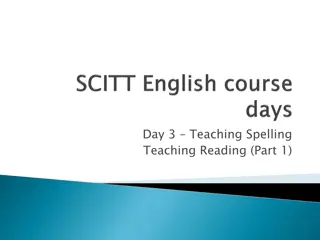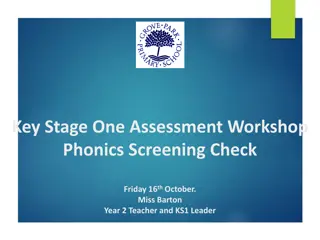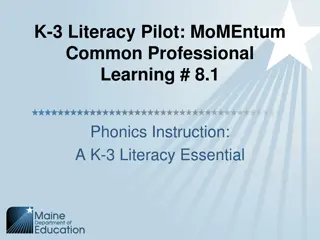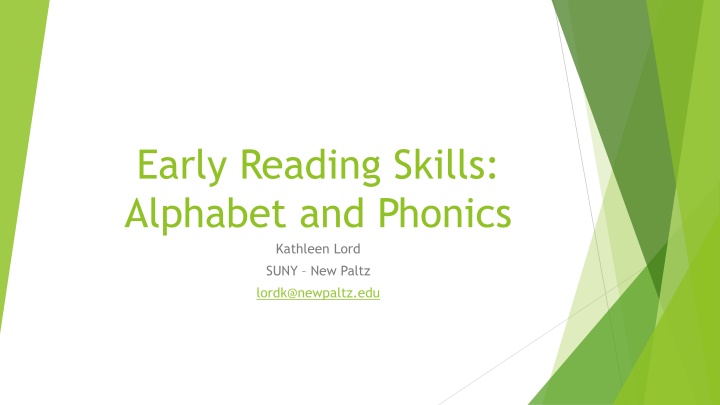
Early Reading Skills: Alphabet, Phonics, and Curriculum-Based Measurements
Explore the fundamentals of early reading skills, including alphabet, phonics, and curriculum-based assessments to monitor progress and comprehension. Dive into letter recognition, phonological awareness, word fluency, and more for effective reading development.
Download Presentation

Please find below an Image/Link to download the presentation.
The content on the website is provided AS IS for your information and personal use only. It may not be sold, licensed, or shared on other websites without obtaining consent from the author. If you encounter any issues during the download, it is possible that the publisher has removed the file from their server.
You are allowed to download the files provided on this website for personal or commercial use, subject to the condition that they are used lawfully. All files are the property of their respective owners.
The content on the website is provided AS IS for your information and personal use only. It may not be sold, licensed, or shared on other websites without obtaining consent from the author.
E N D
Presentation Transcript
Early Reading Skills: Alphabet and Phonics Kathleen Lord SUNY New Paltz lordk@newpaltz.edu
Objectives Review terminology Understand common challenges View instructional videos Preview instructional resources
Skilled Reading Word recognition Phonological awareness Decoding/Encoding Sight Word/High Frequency Words Fluency Language comprehension Background knowledge Vocabulary Genre Structure Strategic reading
Purpose of Curriculum-Based Measurements Identifies and monitors students who might be at- risk Quick and easy one-minute assessments Early reading skills Word recognition Fluency
Curriculum-Based Measurements Assess: Phonological Skills Phoneme Segmentation Alphabetic Principle/Phonics Letter Names Letter Sounds Word Reading Fluency Passage Reading
Impact of Early Reading Skills on Comprehension Comprehension is the goal what gets in the way? Profile 1: Word reading skills not at grade level Profile 2: Word reading skills strong, but fluency not at grade level
Letter Names and Letter Sounds Measures
Letter Names and Letter Sounds (Grades K and 1) What is it? Ability to name letters Ability to provide letter sounds Why is it important? Spelling and reading
Review the Article Target the Problem: Decoding and Phonics Letter-sound relationships Big ideas: Children must accurately and automatically identify letters Then children must be able to accurately and automatically provide the sound that corresponds with each letter Children must learn the alphabet and sounds that represent the 26 letters (both upper and lower case letters) Then children learn how two or more letters can come together to make one sound (th, ch, wh) (the English language has 44 phonemes represented by many letter combinations) Supports spelling and reading words
Common Challenges Children confuse short vowel sounds Children confuse letters: b/d; p/q Children are not automatic but accurate; interferes with reading
Considerations for ELLs Review ELLs article for more information: English Language Learners and the Five Essential Components of Reading Instruction PART 1: Phonics No formal instruction in function of print Letters correspond with different sounds in native language Some letters represent same sounds; other do not particularly vowels
Short Vowel Bingo Place picture cards face down Taking turns, student selects top card Student names the picture and says the middle sound (Vowel) Student places chip on the letter that corresponds with short vowel sound Continue until someone has a bingo
Link to Example https://vimeo.com/201304244/220f975af4
Link to Example https://vimeo.com/201306211/9ae9872895
Word Reading Fluency (Grades K - 3) What is it? Ability to read words accurately Ability to read words automatically Why is it important? Support reading fluency and comprehension
Review the Article Target the Problem: Decoding and Phonics Word reading (sight words) Big ideas: Children must accurately and automatically identify grade-level words High frequency words become sight words (accurate and automatic) Supports spelling and reading words Supports fluency Supports comprehension
Common Areas of Difficulty Children are not automatic but accurate; interferes with reading Phonics skills are not yet mastered Patterns of difficulty can be recognized When reviewing errors, note common errors Short vowels, digraphs (ph, sh, ch, th), long vowels (silent-e, vowel teams), words with more than one syllable
Word Recognition Skills: Instructional Sequence Phonics skills following the Common Core State Standards Determine skills according to grade Kindergarten: Letters, letter sounds, high-frequency words at grade level Grade 1: Short vowel words, consonant blends, consonant digraphs, silent-e words Grade 2: Vowel teams and diphthongs, r-controlled vowels, multisyllabic words Grade 3 and beyond: Prefixes/suffixes; syllable patterns
STRATEGY: High-Frequency Words High-frequency word lists (Dolch) Instruction: Word Rings: 10 words on a ring or in envelope 3 new words 4 words still learning 3 known words Read it, spell it, say it Include words in a Word Study Notebook
Instruction: Multi-syllables Students in grades 2 and above require instruction in words with more than one syllable: 2 effective approaches Syllable awareness and syllable types Morphemes (meaningful word parts) Photo means LIGHT Therm means HEAT Inter means BETWEEN INTERNATIONAL Between countries
Instructional Resources Grades K-1 http://fcrr.org/resources/resources_sca_k-1.html http://www.starfall.com/n/level-k/index/load.htm Grades 2-5 http://fcrr.org/resources/resources_sca_2-3.html http://fcrr.org/resources/resources_sca_4-5.html ARTICLE additional information http://www.readingrockets.org/article/letters-and-sounds-practical-ideas- parents





